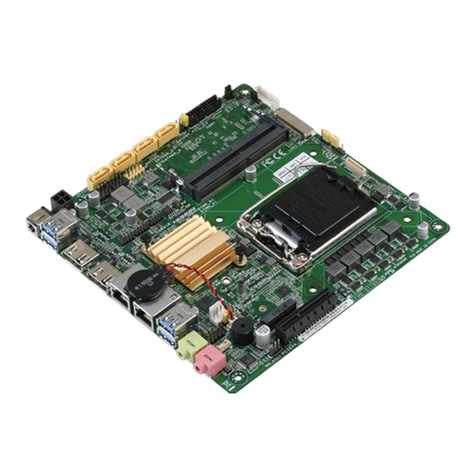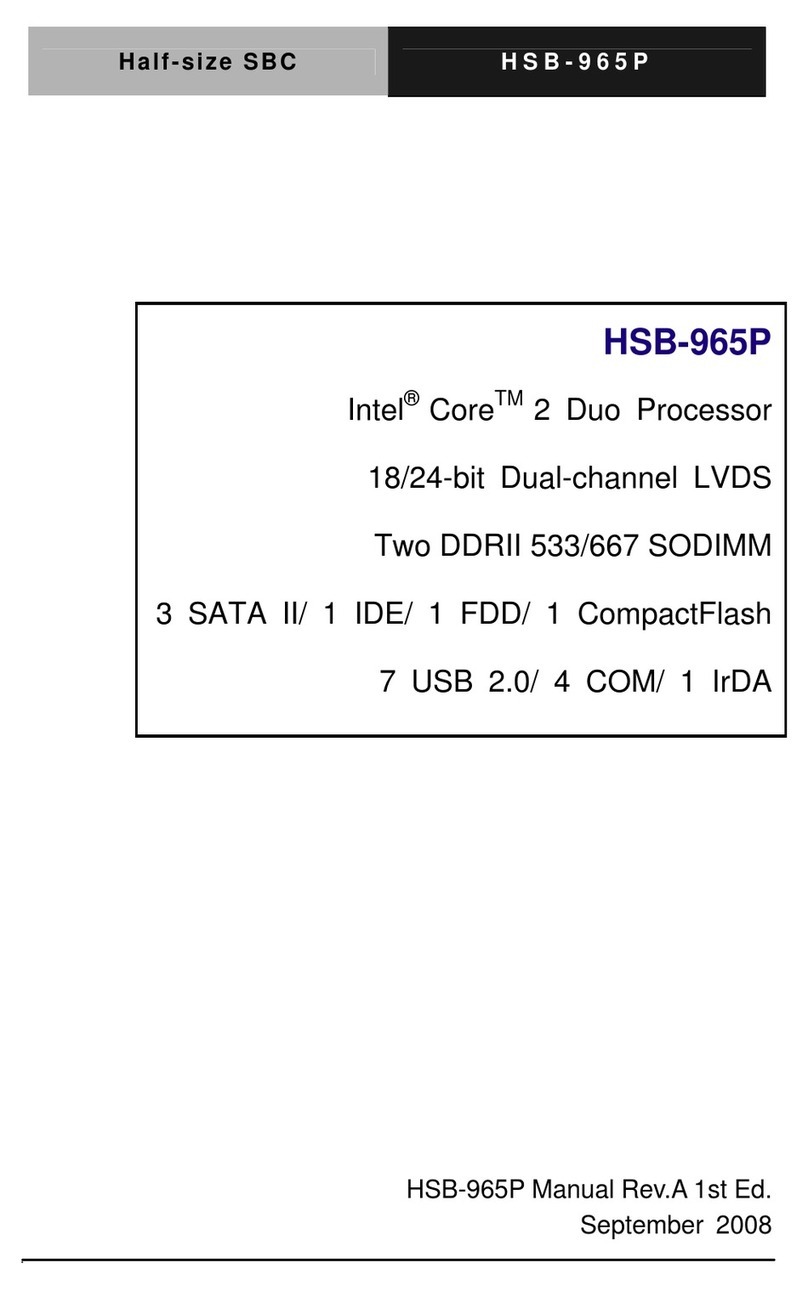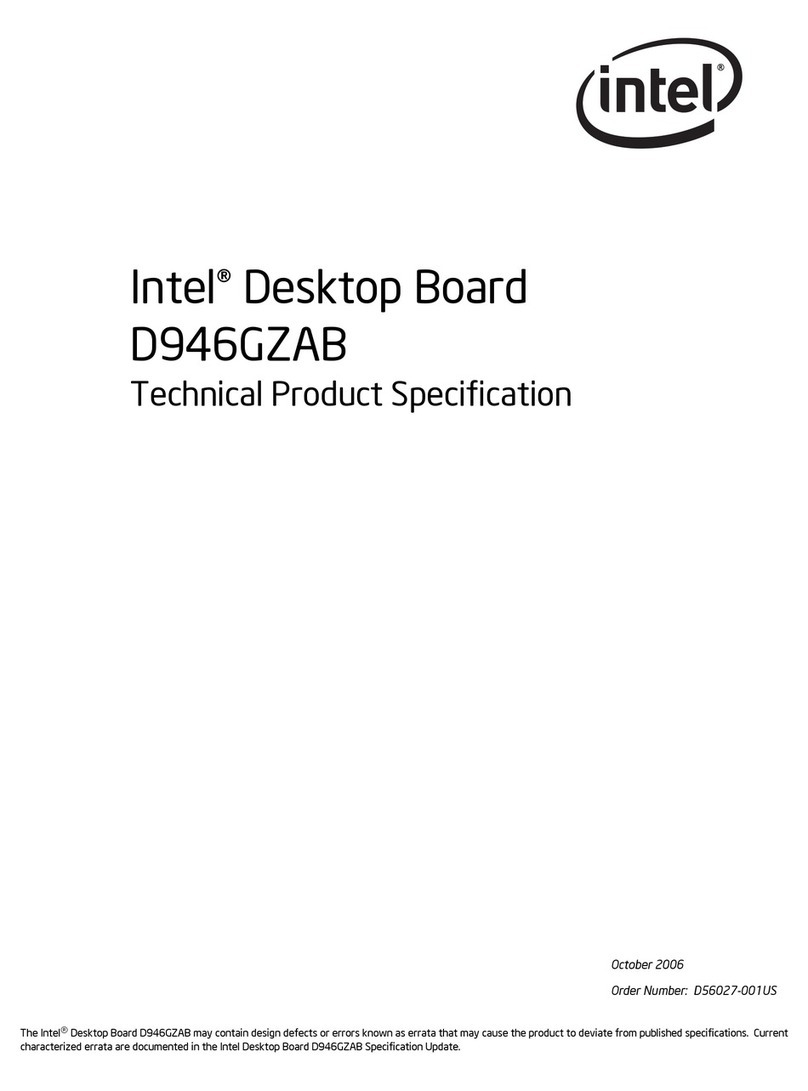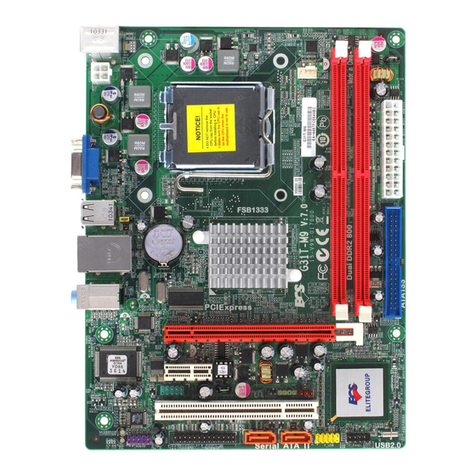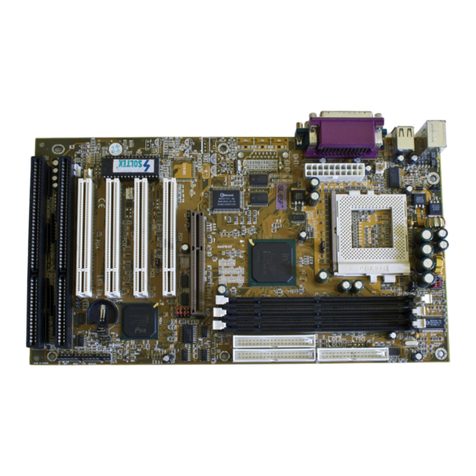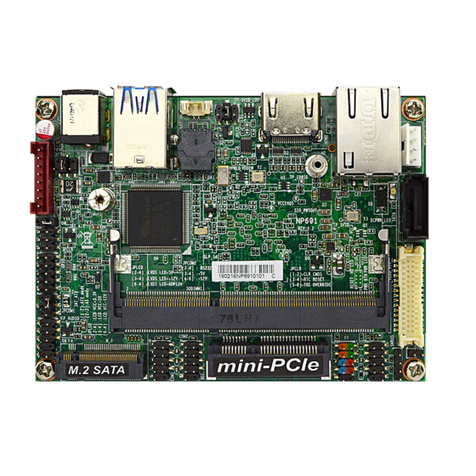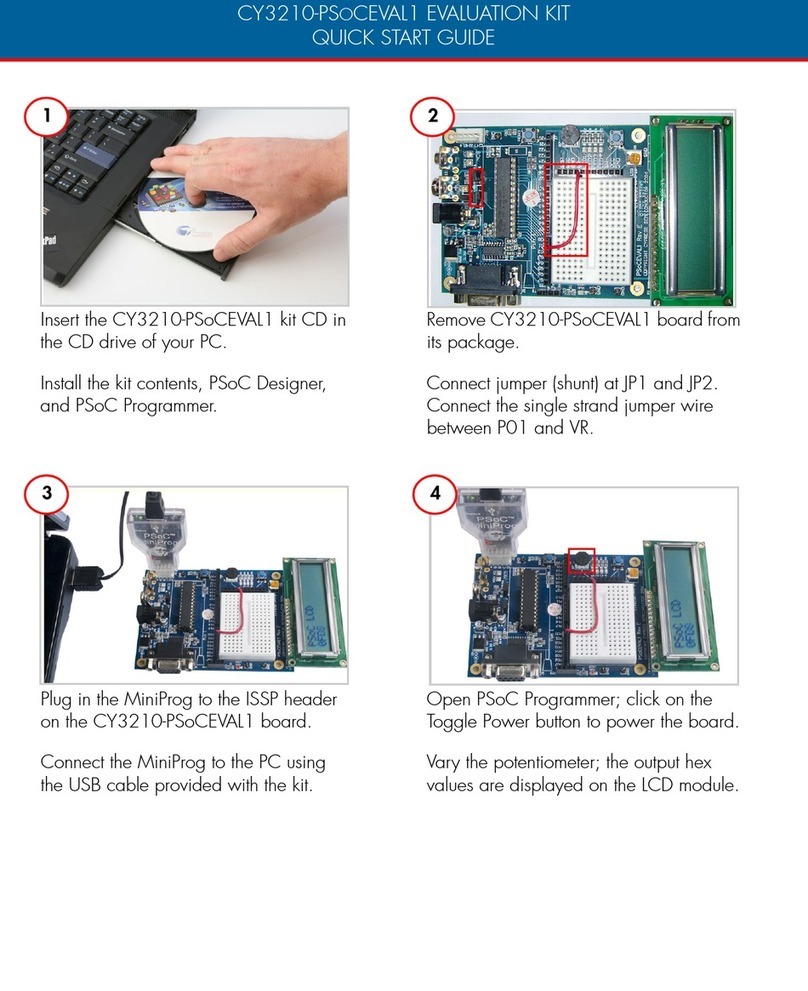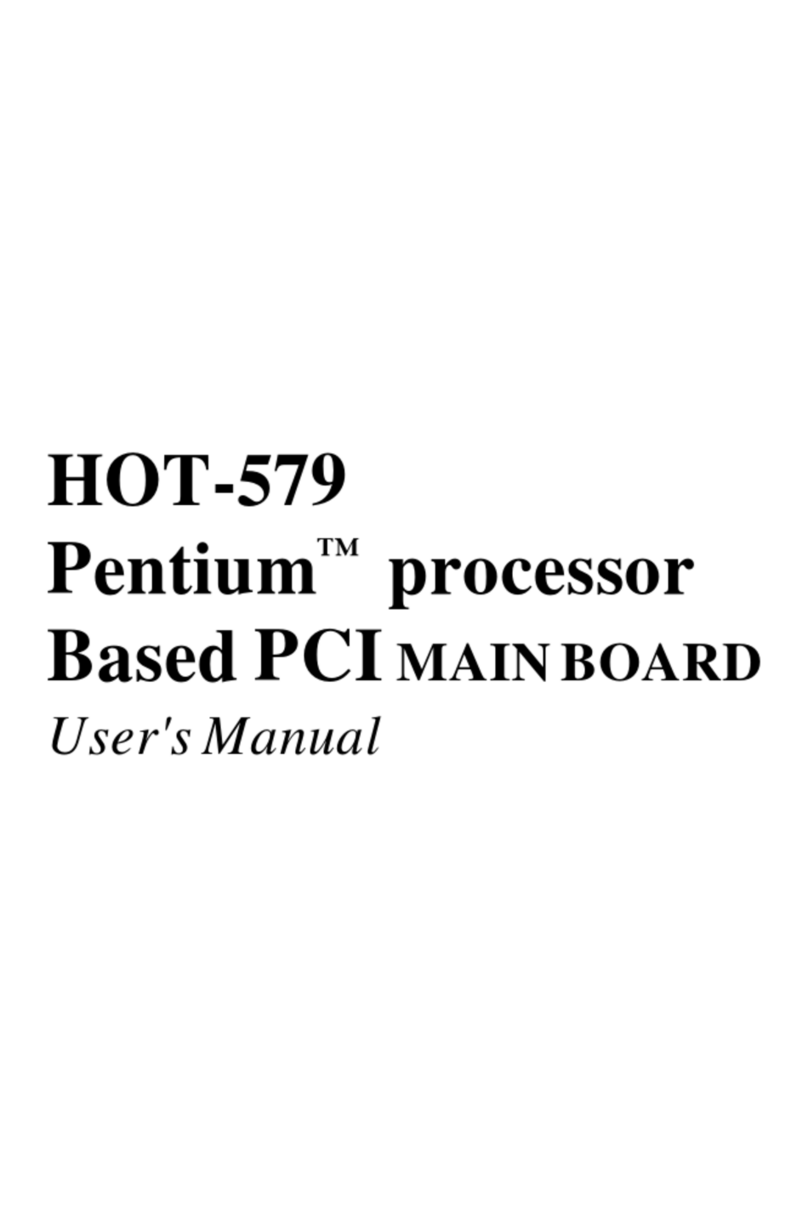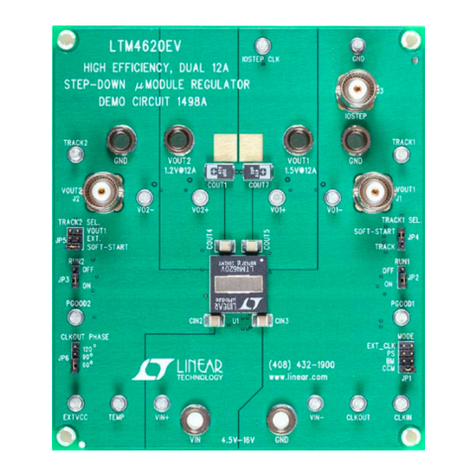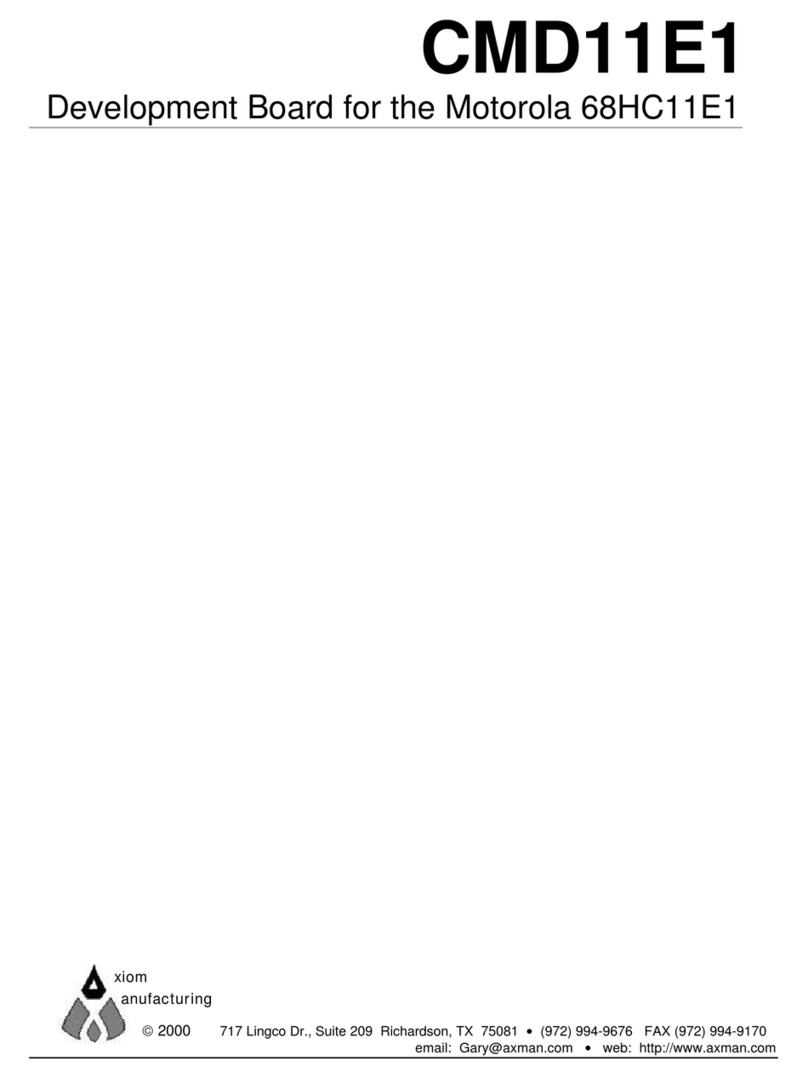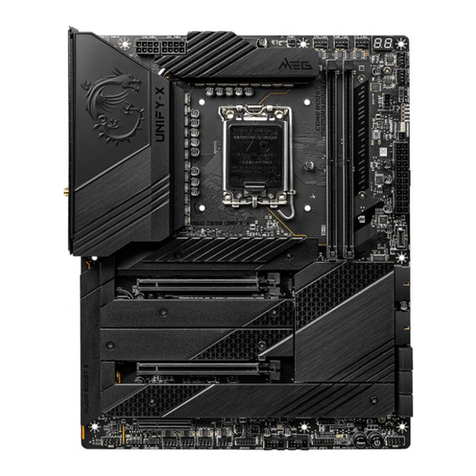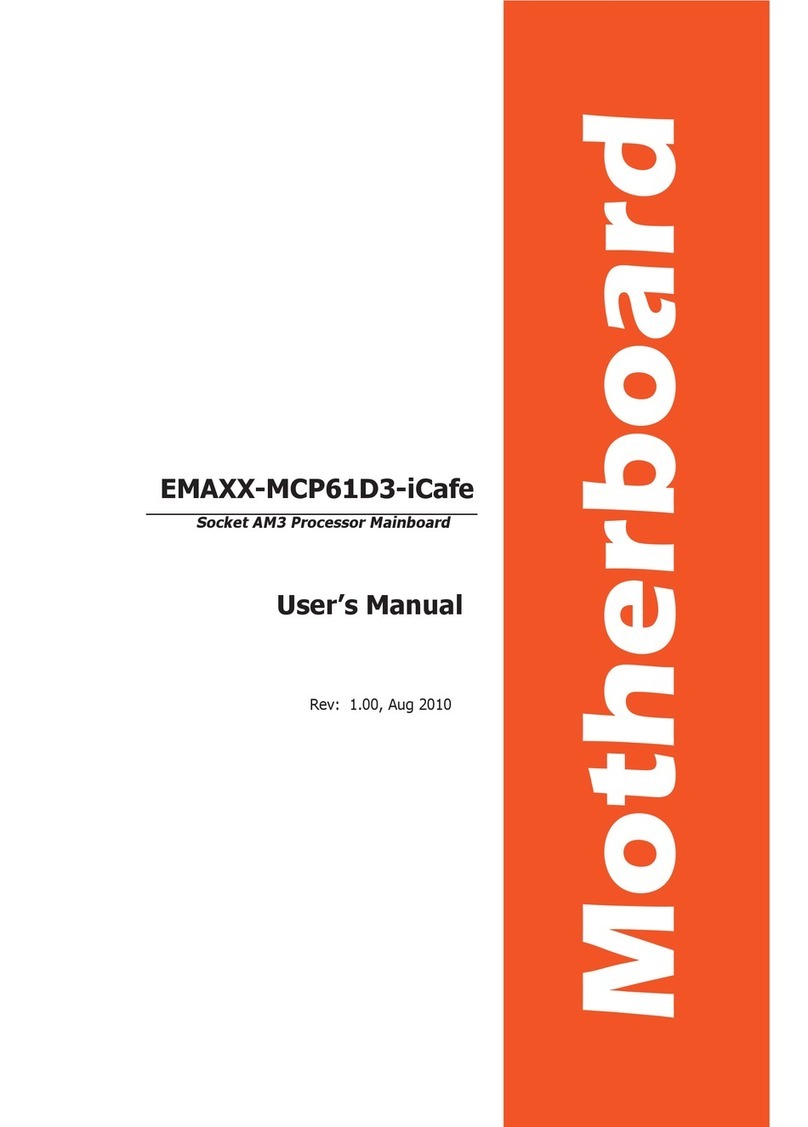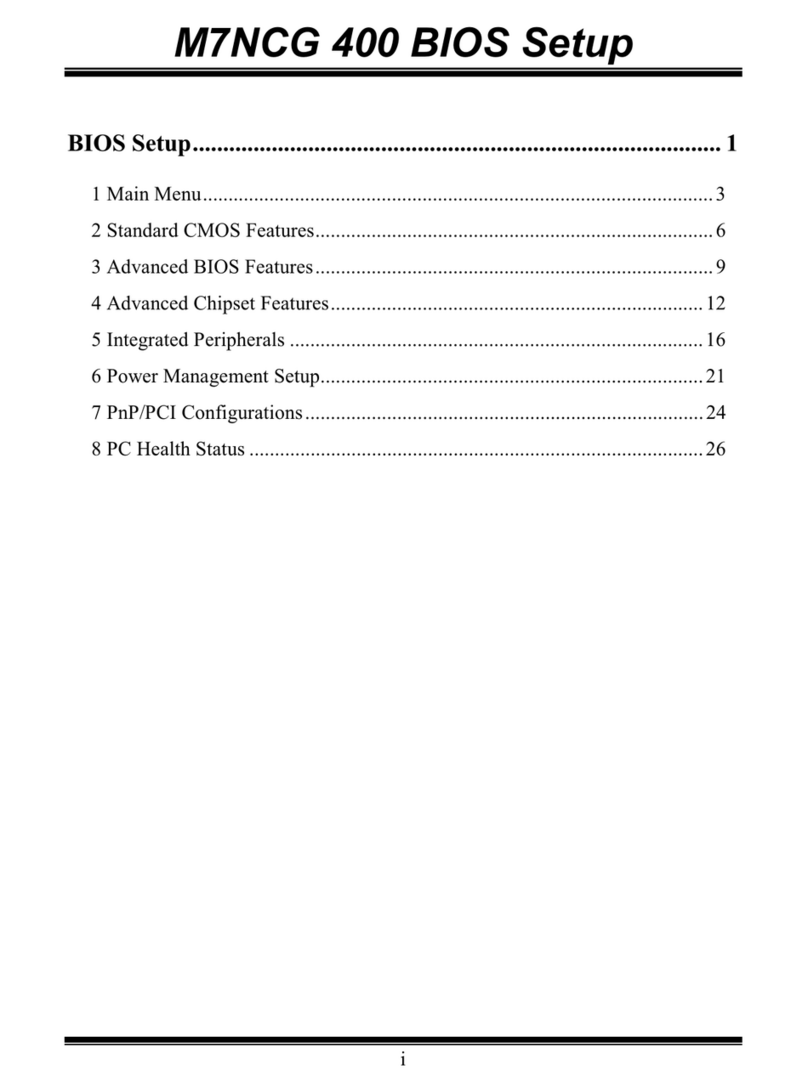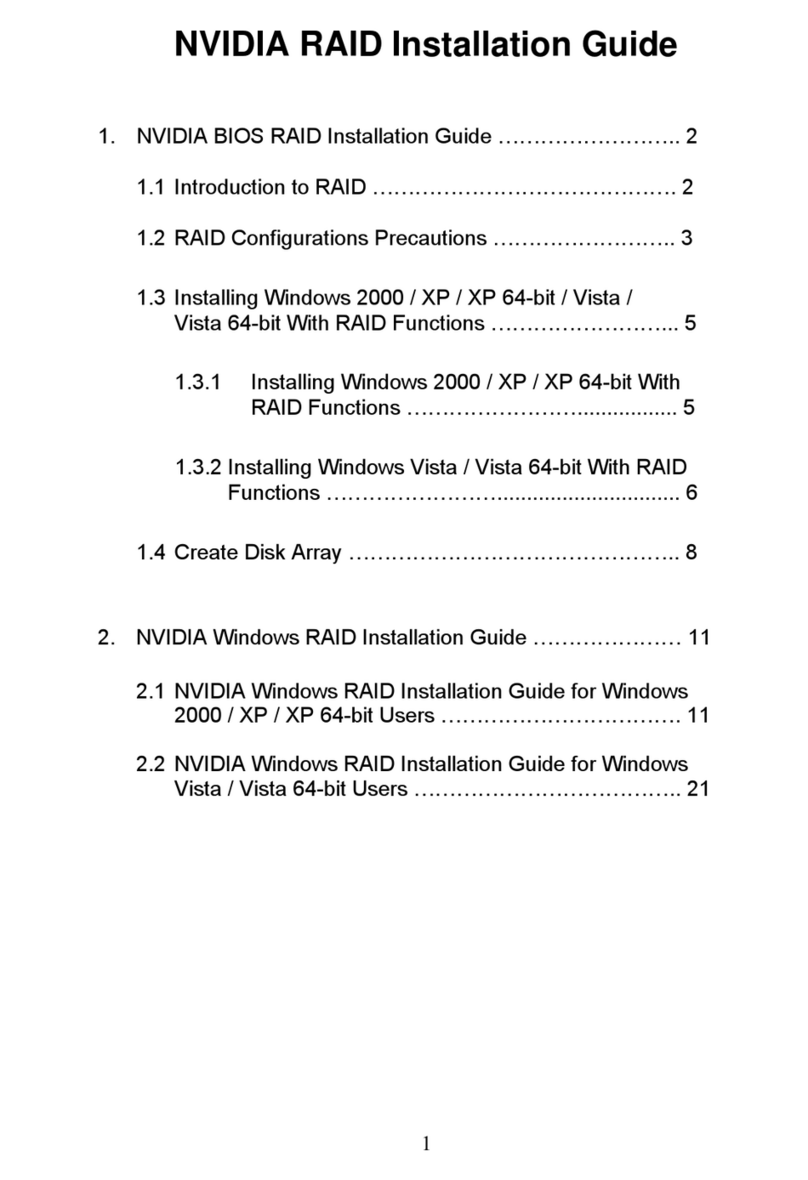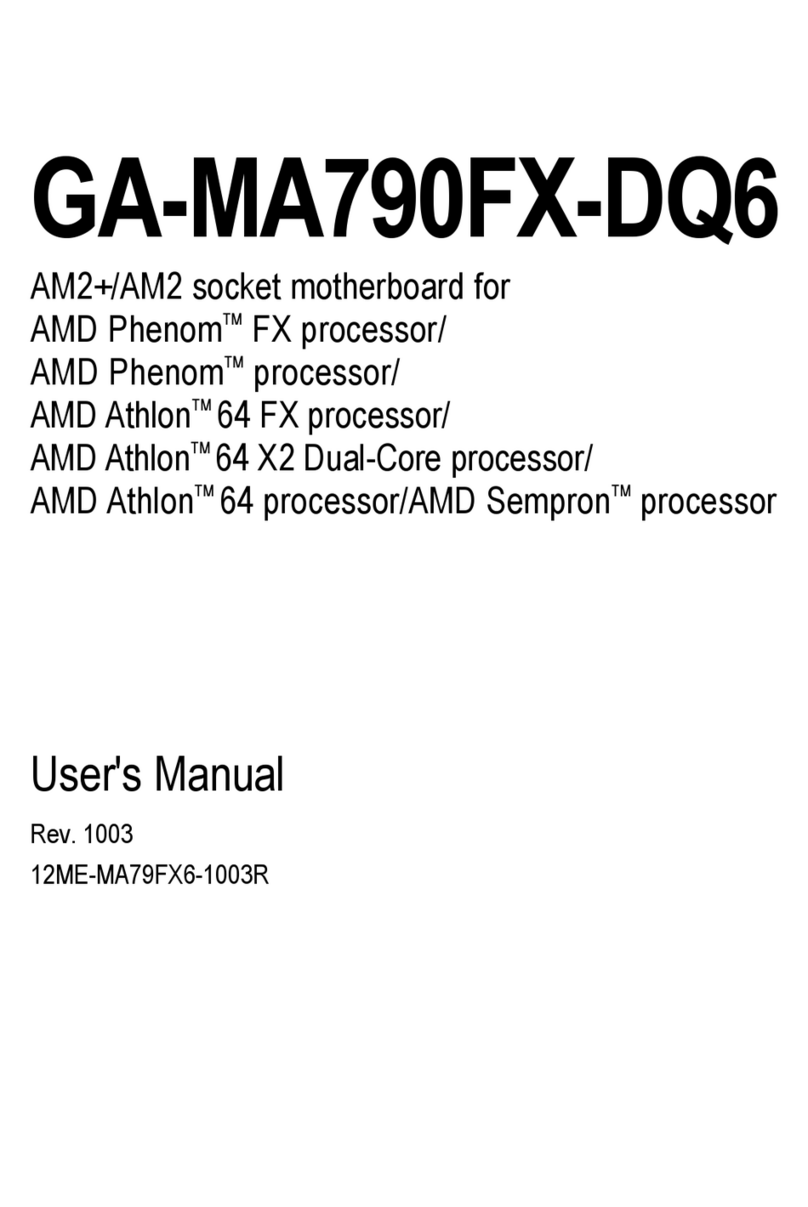Aaeon SBC-455 User manual

SBC-455
Half-size 486 CPU Card with
Flat Panel/CRT SVGA Interface

FCC STATEMENT
THIS DEVICE COMPLIES WITH PART 15 FCC RULES.
OPERATION IS SUBJECT TO THE FOLLOWING TWO
CONDITIONS: (1) THIS DEVICE MAY NOT CAUSE
HARMFUL INTERFERENCE. (2) THIS DEVICE MUST
ACCEPT ANY INTERFERENCE RECEIVED INCLUDING
INTERFERENCE THAT MAY CAUSE UNDESIRED OPER-
ATION.
THIS EQUIPMENT HAS BEEN TESTED AND FOUND
TO COMPLY WITH THE LIMITS FOR A CLASS "A"
DIGITAL DEVICE, PURSUANT TO PART 15 OF THE
FCC RULES. THESE LIMITS ARE DESIGNED TO
PROVIDE REASONABLE PROTECTION AGAINTST
HARMFUL INTERFERENCE WHEN THE EQUIPMENT IS
OPERATED IN A COMMERCIAL ENVIRONMENT.
THIS EQUIPMENT GENERATES, USES, AND CAN
RADIATE RADIO FREQENCY ENERGY AND , IF NOT
INSTATLLED AND USED IN ACCORDANCE WITH THE
INSTRUCTION MANUAL, MAY CAUSE HARMFUL
INTERFERENCE TO RADIO COMMUNICATIONS.
OPERATION OF THIS EQUIPMENT IN A RESIDEN-
TIAL AREA IS LIKELY TO CAUSE HARMFUL INTER-
FERENCE IN WHICH CASE THE USER WILL BE
REQUIRED TO CORRECT THE INTERFERENCE AT HIS
OWN EXPENSE.

Copyright Notice
This document is copyrighted, 1995, 1996, by AAEON Technol-
ogy Inc. All rights are reserved. AAEON Technology Inc. reserves
the right to make improvements to the products described in this
manual at any time without notice.
No part of this manual may be reproduced, copied, translated or
transmitted in any form or by any means without the prior written
permission of AAEON Technology Inc. Information provided in
this manual is intended to be accurate and reliable. However,
AAEON Technology Inc. assumes no responsibility for its use, nor
for any infringements upon the rights of third parties which may
result from its use.
Acknowledgements
ALI is a trademark of Acer Laboratories, Inc.
AMD is a trademark of Advanced Micro Devices, Inc.
AMI is a trademark of American Megatrends, Inc.
AutoCAD and AutoShade are trademarks of Autodesk, Inc.
CHIPS Logotype is a registered trademark; Chips 65545 is a
trademark of Chip and Technologies, Inc.
Cyrix is a trademark of Cyrix Corporation.
IBM, PC/AT, PS/2 and VGA are trademarks of International
Business Machines Corporation.
Intel and Pentium are trademarks of Intel Corporation.
Lotus, 1-2-3 an Symphony are trademarks of Lotus Development
Corp.
Microsoft Windows®, MS-DOS, Corporation Windows and
Microsoft are registered trademarks of Microsoft Corp.
SMC is a trademark of Standard Microsystems Corporation.
TurboDLD Classic is a trademark of Panacea Inc.
UMC is a trademark of United Microelectronics Corporation.
WordPerfect is a trademark of WordPerfect Corporation.
VESA®is a registered trademark of Video Electronics Standards
Association.
All other product names or trademarks are properties of their
respective owners.
Part No. 2006455023 SBC-455 B1 4th Edition
Printed in Taiwan July 1997

Packing list
Before you begin installing your card, please make sure that the
following materials have been shipped:
• 1 SBC-455CPUcard
• 1 6-pin mini-DIN dual outlet adapter for keyboard and PS/2
mouse
• 1 Hard diskdrive (IDE)interface cable(40 pin)
• 1 Floppy disk drive interface cable (34 pin)
• 1 Parallel port adapter (26 pin) and COM2 adapter (9 pin) kit
• 5 Utility diskswith CHIPS65545/48 utilityprograms anddrivers
• PC/104 Expansion connector converter (pin headers)
• PC/104 Module mounting supports
If any of these items are missing or damaged, contact your distribu-
tor or sales representative immediately.

Contents
Chapter 1: General Information ..................................................1
Introduction ........................................................................... 2
Features.................................................................................. 3
Specifications ......................................................................... 4
Board layout ........................................................................... 6
Card dimensions.................................................................... 7
Chapter 2: Installation ..................................................................9
Jumpers and connectors .................................................... 10
Locating jumpers and connectors .................................... 11
Setting jumpers ................................................................... 12
Safety precautions ............................................................... 13
Installing the CPU............................................................... 13
Removing a CPU ....................................................................13
Installing a CPU ......................................................................14
CPU type select (JP1, JP3, JP4) ............................................15
CPU Vcc select (JP2) ............................................................16
CPU clock select (JP9, JP10).................................................16
Installing DRAM (SIMMs) ............................................... 17
InstallingSIMMs .....................................................................17
Removing SIMMs ...................................................................17
IDE hard drive connections (IDE) ................................... 18
Connecting the hard drive .......................................................18
IDE LED (IDE LED) .............................................................19
Floppy drive connections (FLOPPY DISK).................... 20
Connecting the floppy drive.....................................................20
Parallel port (PRINTER) ................................................... 21
Installing the retaining bracket.................................................21
Parallel port DRQ and DACK (JP11) ....................................22
Power supply connections (POWER CON) .................... 22
Power supply connector..........................................................22

Display connections (VGA, LCD)..................................... 23
LCD signal select (JP5, JP7) ............................................ 24
Keyboard and PS/2 KB/ mouse connections
(KB CON, KB/PS2 MOUSE) ........................................... 25
Serial ports ........................................................................... 26
RS-232 connections (COM A, COM B) ................................26
Serial ports IRQ select (JP11).................................................27
Watchdog timer setup......................................................... 28
Watchdog timer time-out signal select (JP6)...........................28
Watchdog timer programming .................................................28
External switches and LEDs ............................................. 30
Power LED and keylock (KEY LOCK) ................................30
External speaker (EXT SPK) .................................................30
Reset switch (RESET SW).....................................................31
Turbo LED (TURBO LED)....................................................31
SMI (System Management Interrupt) switch (SMI SW) .......32
Turbo Switch (TURBO SW) ..................................................32
Clear CMOS (JP12)................................................................32
Flash BIOS Protect (JP8) .......................................................33
Flash BIOS Write-enable Voltage (JP13) ...............................33
Chapter 3: AMI WinBIOS Setup .................................................35
General information ............................................................ 36
Starting WinBIOS setup ..........................................................36
WinBIOS main menu ..............................................................36
Using a mouse with WinBIOS setup.......................................37
Using the keyboard with WinBIOS setup ...............................37
Setup ..................................................................................... 38
Standard Setup ........................................................................38
Advanced Setup ......................................................................40
Chipset Setup ..........................................................................46
Power Management Setup......................................................48
PCI/PnP Setup ........................................................................49
Peripheral Setup ......................................................................53
Utility..................................................................................... 56

Security ................................................................................. 57
Setting a Password..................................................................58
Anti-virus.................................................................................59
Default................................................................................... 60
Original ....................................................................................60
Optimal ....................................................................................60
Fail-Safe ..................................................................................60
Exiting WinBIOS ................................................................ 61
Chpater 4: Flat Panel/CRT Controller Display Drivers and
Utilities ...............................................................63
Software drivers .................................................................. 64
Hardware configuration ..........................................................64
Necessary prerequisites ..........................................................65
Before you begin .....................................................................65
WindowsÔ 95 ......................................................................... 66
WindowsÔ 3.1 ........................................................................ 67
DOS ........................................................................................68
OS/2 ........................................................................................69
WindowsÔ NT3.51 ................................................................ 72
Windows NT4.0 ......................................................................73
Software utilities.................................................................. 74
The CHIPSDSP utility program..............................................74
The CHIPSCPL utility program..............................................76
Appendix A: Watchdog Timer Demo Program....... 79
Appendix B: Installing PC/104 Modules ................. 83
Appendix C: LCD Display BIOS Configuration..... 87


Chapter 1 General Information 1
1
General
Information
This chapter provides background
informationforthe SBC-455.
Sections include:
• Card specifications
• Board layout
CHAPTER

2SBC-455 User's Manual
Introduction
The SBC-455 is an all-in-one single board 486 computer with an on-
board flat panel/CRT SVGA controller. It packs all the functions of
an industrial computer and its display capabilities onto a single, half-
size card. This means the SBC-455 is your absolute best solution for
embedded applications.
The on-board PCI-bus, flat panel/CRT SVGA controller uses the
CHIPS 65548 chipset with up to 1 MB of video memory. This chipset,
used with the local PCI-bus, enables 32-bit graphic throughput at up
to 33 MHz. Excellent for display-intensive applications, it supports
various LCD types including TFT, STN, B/W, and EL.
Another feature of the SBC-455 is the inclusion of a high speed, local
bus IDE controller. This controller supports (through ATA PIO) mode
3 and mode 4 hard disks, enabling data transfer rates in excess of 11
MB/second. Up to four IDE devices can be connected, including large
hard disks, CD-ROM drives, tape backup drives, or other IDE
devices. The built-in, enhanced IDE controller provides a 4-layer, 32-
bit, posted write buffer and a 4-layer, 32-bit read-prefetch buffer to
accomplish IDE boost performance improvements.
On-board features include two high speed RS-232 serial ports with
16C550 UARTs, one bidirectional SPP/EPP/ECP parallel port and a
floppy drive controller. In addition to the 486's 16 KB of on-chip
cache memory, the SBC-455 includes an extra 128 KB of second level
on-board cache memory.
If program execution is halted by a program bug or EMI, the board's
16-stage watchdog timer can automatically reset the CPU or generate
an interrupt. This ensures reliability in unmanned or standalone
systems.
The SBC-455 supports 5 V EDO DRAM. It also provides two 72-pin
SIMM (Single In-line Memory Module) sockets for its on-board
system DRAM. These sockets give you the flexibility to configure
your system from 1 MB to 64 MB of DRAM using the most economi-
cal combination of SIMMs.

Chapter 1 General Information 3
Features
•Accepts Intel, AMD, Cyrix or other compatible 486 processors, including
the P24T Pentium OverDrive
•Half-size PC/AT-compatible ISA-bus CPU card
•AMI Flash BIOS
•Daughterboard available for various flat panel displays
•On-board 32-bit PCI-bus, flat panel/CRT SVGA controller
•Built-in PCI Enhanced IDE controller, supports two IDE devices (large
hard disks, CD-ROM, tape backup, etc.)
•Up to 64 MB on-board DRAM
•Supports 5 V EDO DRAM
•Two high speed serial RS-232 ports (16C550 UARTs with 16-byte FIFO).
IRQ 3, 4 or IRQ 10, 11 can be individually selected
•One enhanced bidirectional parallel port. Supports SPP/EPP/ECP
•Watchdog timer (15 steps, 2 seconds per step)
•On-board keyboard and PS/2 mouse connector
•Connectors for PC/104 module expansion
•"Green" function supports power management
•Clear CMOS function

4SBC-455 User's Manual
Specifications
CPU:80486SX/DX/DX2/DX425/33/40/50/66/75/100/120MHz,5x86-100/120/
133 or Pentium OverDrive processor
Bus interface: ISA bus
Databus:32-bit
Processingability: 32-bit
Chipset:ALI/1489/1487
RAMmemory: 1 MB to 64 MB. Uses two 72-pin SIMM sockets
L2Cachememory size:128/256/512KB2nd levelcachememory
ShadowRAM memory:Supports systemandvideo BIOSshadow memory
Flatpanel/CRTSVGAcontroller: SVGA,PCI-bus,CHIPS65548chipset with
512 KB standard video memory, upgradable to 1 MB. Provides 32-bit graphic
throughput. Features the ability to control most TFT, STN, B/W, EL flat panel
displays as well as standard CRT. Supports resolutions up to 1024 x 768 in 256
colors. Daughterboards available for various flat panel displays.
EnhancedIDE harddisk driveinterface:Fast PCI bus.Supports upto two
Enhanced IDE (ATA-2) large hard disk drives or other Enhanced IDE
devices. Supports mode 3 and mode 4 hard disks (data transfer rate 11.1 MB/
sec. minimum)
Floppy disk drive interface: Supports up to two floppy disk drives, 5 1/
4"¼" (360 KB and 1.2 MB) and/or 3 1/2" (720 KB, 1.44 and 2.88 MB)
Bidirectional parallel port:Configurable to LPT1, LPT2, LPT3 or disabled
Supports SPP/EPP/ECP standards
Serial ports: Two serial RS-232 ports, uses 16C550 UARTs with 16-byte
FIFO buffer. Supports speeds up to 115 Kbps. Ports can be individually
configured from COM1 to COM4 or disabled.
BIOS: AMI Flash WIN BIOS
Watchdog timer: Can generate a system reset or IRQ15. The time interval is
software selectable from 2 to 32 seconds (15 steps, 2 seconds per step).
PC/104: 104-pin connector for a 16-bit bus
DMA channels: 7

Chapter 1 General Information 5
Interruptlevels:15
Keyboard/PS/2 mouseconnector:A 6-pinmini DINkeyboard connector is
located on the mounting bracket for easy access to a keyboard and a PS/2
mouse
Bus speed: 8 MHz
System performance: 325 MHz in 80486 DX4-100 (Landmark V2.0)
Max. power requirements: +5 V @ 2.5 A
Power supply voltage: +5 V (4.75 V to 5.25 V), +12 V, -12 V; for DX4-
100/120 and P24T CPUs, a cooler is necessary
Operating temperature: 32 to 140°F (0 to 60°C)
Board size: 7.3" (L) x 4.8" (W) (185 mm x 122 mm)
Board weight: 0.6 lbs (0.26 Kg)

6SBC-455 User's Manual
Board layout
SBC-455 486SX/DX/DX2/DX4 CPU CARD WITH CACHE REV. B1
SMC
FDC37C665
ST
M48T86PCI
ALI
M1489
16V8
14.318
24MHz
SC464
IMI
MEGA-KB
AMI BIOS
ALI
M1487
CHIPS
FS65545 B2
TC5142560BJ-70

Chapter 1 General Information 7
Card dimensions
SBC-455 486SX/DX/DX2/DX4 CPU CARD WITH CACHE REV. B1
122.00
98.50
19.50
178.00
185.00
80.65
73.66 26.00
19.00

8SBC-455 User's Manual

Chapter 2 Installation 9
2
Installation
This chapter explains set up procedures
for the SBC-455 hardware, including
instructions on setting jumpers and
connecting peripherals, switches and
indicators. Be sure to read all safety
precautions before you begin the installa-
tion procedure.
CHAPTER

10 SBC-455 User's Manual
Jumpers and connectors
Connectors on the board link it to external devices such as hard
disk drives, a keyboard, or floppy drives. In addition, the board has
a number of jumpers that allow you to configure your system to
suit your application.
The table below lists the function of each of the board jumpers and
connectors:
Jumpers and connectors
Label Function
JP2 CPU voltage select
JP1,3,4 CPU type select
JP11 COM port IRQ and Parallel port DRQ/DACK
select
JP5 LCD clock signal select
JP7 LCD enabled signal select
JP6 Watchdog out select
JP9, 10 CPU clock select
JP12 Clear CMOS
JP8 Flash BIOS Protect
JP13 Flash BIOS Write-enable Voltage
Primary IDE Enhanced IDE connector
Floppy disk FDD connector
Printer Parallel port connector
LCD LCD panel connector
COM B Serial port 2
RESET SW Reset Switch
EXT SPK Ext. speaker
KEY LOCK Power LED and KB lock
TURBO SW Turbo Switch
SMI SW SMI Switch
POWER CON Power connector
IDE LED IDE LED
TURBO LED Turbo LED
COM A Serial port 1
VGA VGA connector
KB CON External keyboard connector
KB/PS2 MOUSE Keyboard or PS/2 mouse connector
J1,2 PC/104 module connector
SIMM1,2 DRAM module socket

Chapter 2 Installation 11
Locating jumpers and connectors
COM1
POWER CON VGA
KB CON
PC/104
MODULE
CONNECTOR
JP 9, 10
SIMM SOCKETS
Primary IDE
FLOPPY DISK
JP5
JP6
JP13
JP7
JP8
LCD
COM2
KB/PS2
MOUSE
SMI SW
TURBO SW
JP12
KEYLOCK
EXT SPK
JP11
PRINTER
CPU TYPE
CPU Vcc
RESETSW
TURBO LED
IDELED
SBC-455 486SX/DX/DX2/DX4 CPU CARD WITH CACHE REV. B1
SMC
FDC37C665
ST
M48T86PCI
ALI
M1489
16V8
14.318
24MHz
SC464
IMI
MEGA-KB
AMI BIOS
ALI
M1487
CHIPS
FS65545 B2
TC5142560BJ-70

12 SBC-455 User's Manual
13
2
Open Closed Closed 2-3
Open Closed Closed 2-3
1 2 3
Setting jumpers
You configure your card to match the needs of your application by
setting jumpers. A jumper is the simplest kind of electric switch. It
consists of two metal pins and a small metal clip (often protected
by a plastic cover) that slides over the pins to connect them. To
close a jumper you connect the pins with the clip. To "open" a
jumper you remove the clip. Sometimes a jumper will have three
pins, labeled 1, 2 and 3. In this case you would connect either pins
1 and 2 or 2 and 3.
The jumper settings are schematically depicted in this manual as
follows:
A pair of needle-nose pliers may be helpful when working with
jumpers.
If you have any doubts about the best hardware configuration for
your application, contact your local distributor or sales representa-
tive before you make any changes.
Generally, you simply need a standard cable to make most
connections.
Table of contents
Other Aaeon Motherboard manuals
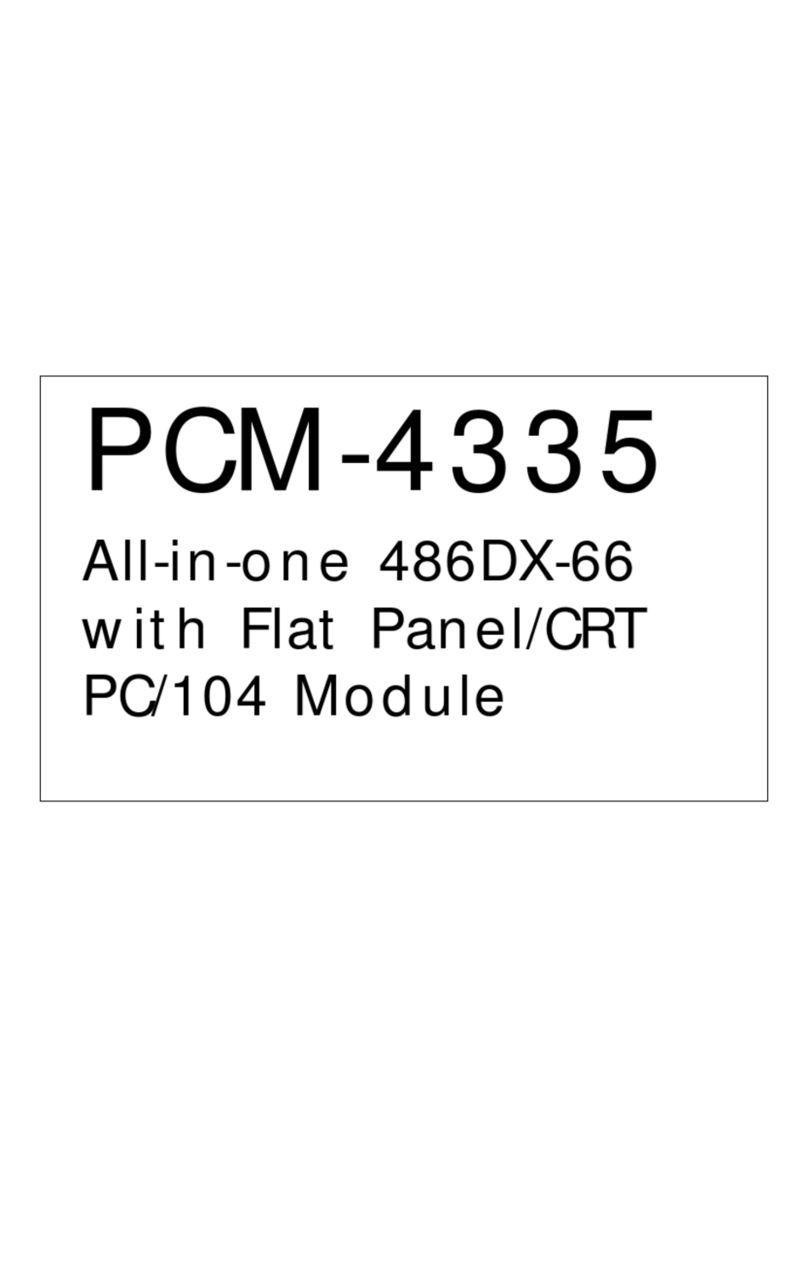
Aaeon
Aaeon PCM-4335 User manual
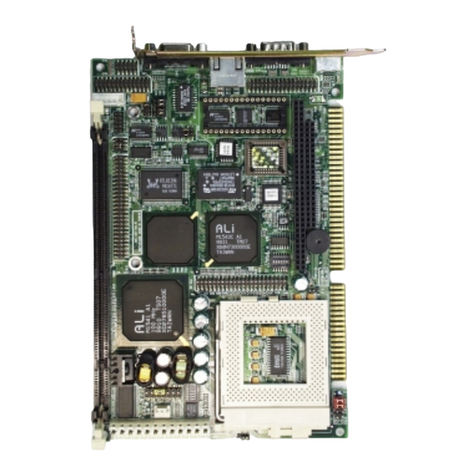
Aaeon
Aaeon SBC-557 User manual
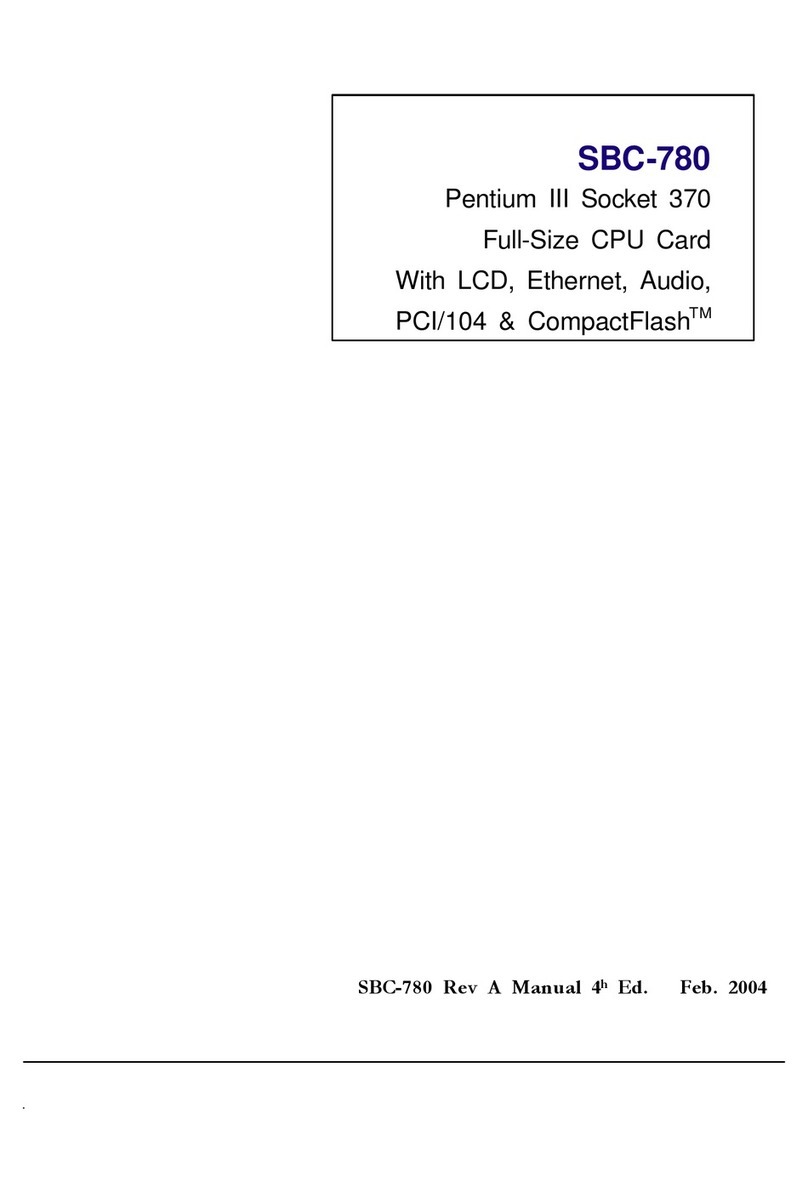
Aaeon
Aaeon SBC-780 User manual
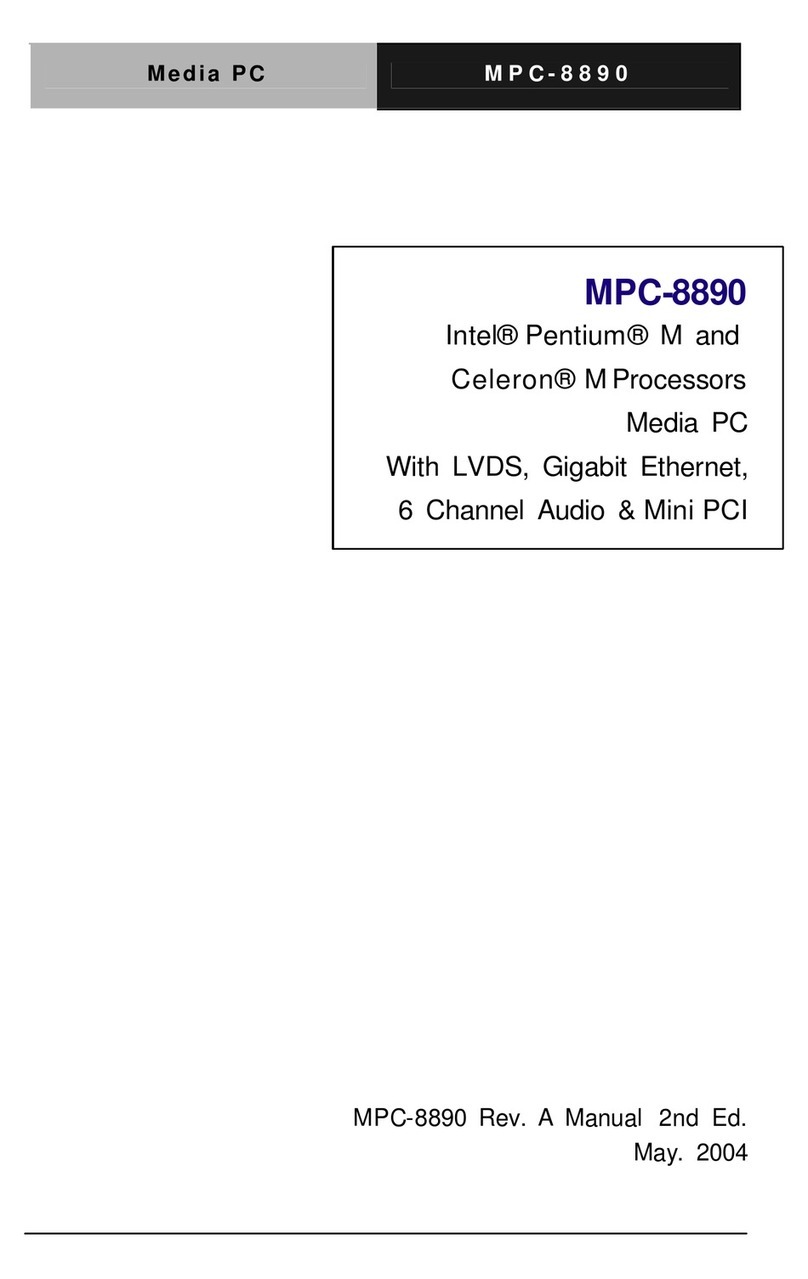
Aaeon
Aaeon MPC-8890 User manual
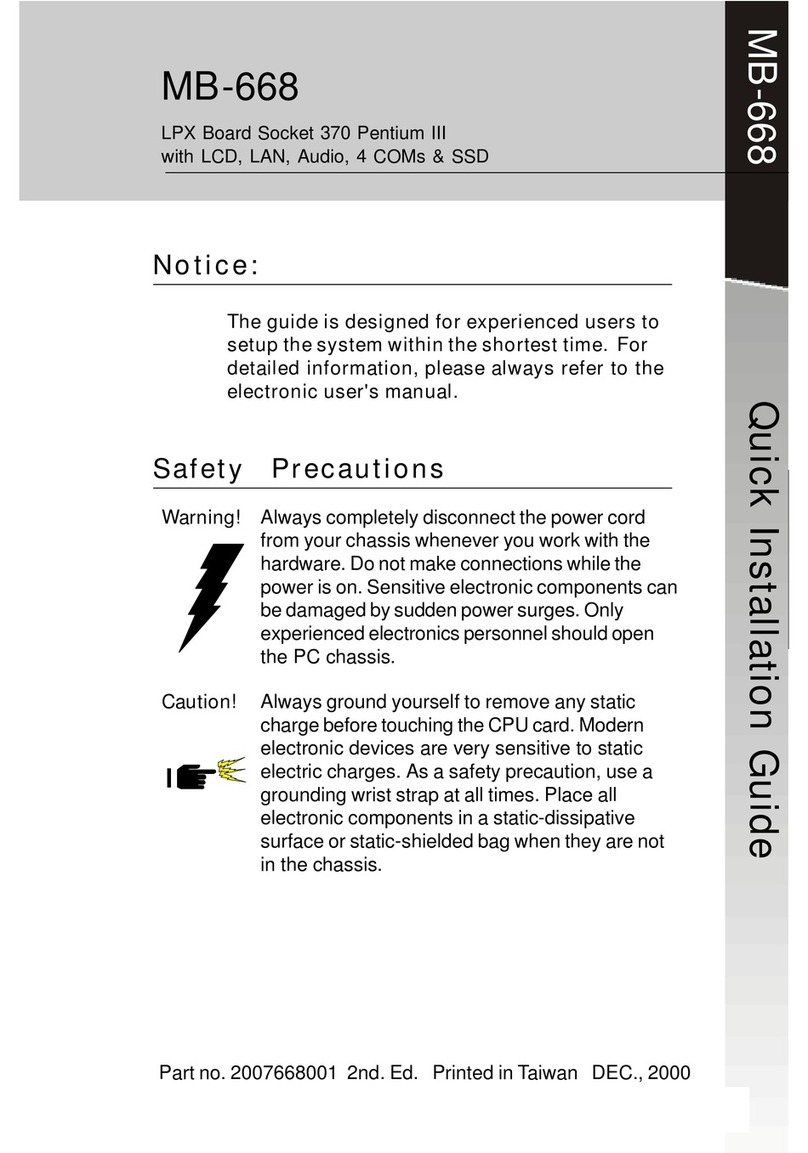
Aaeon
Aaeon MB-668 User manual
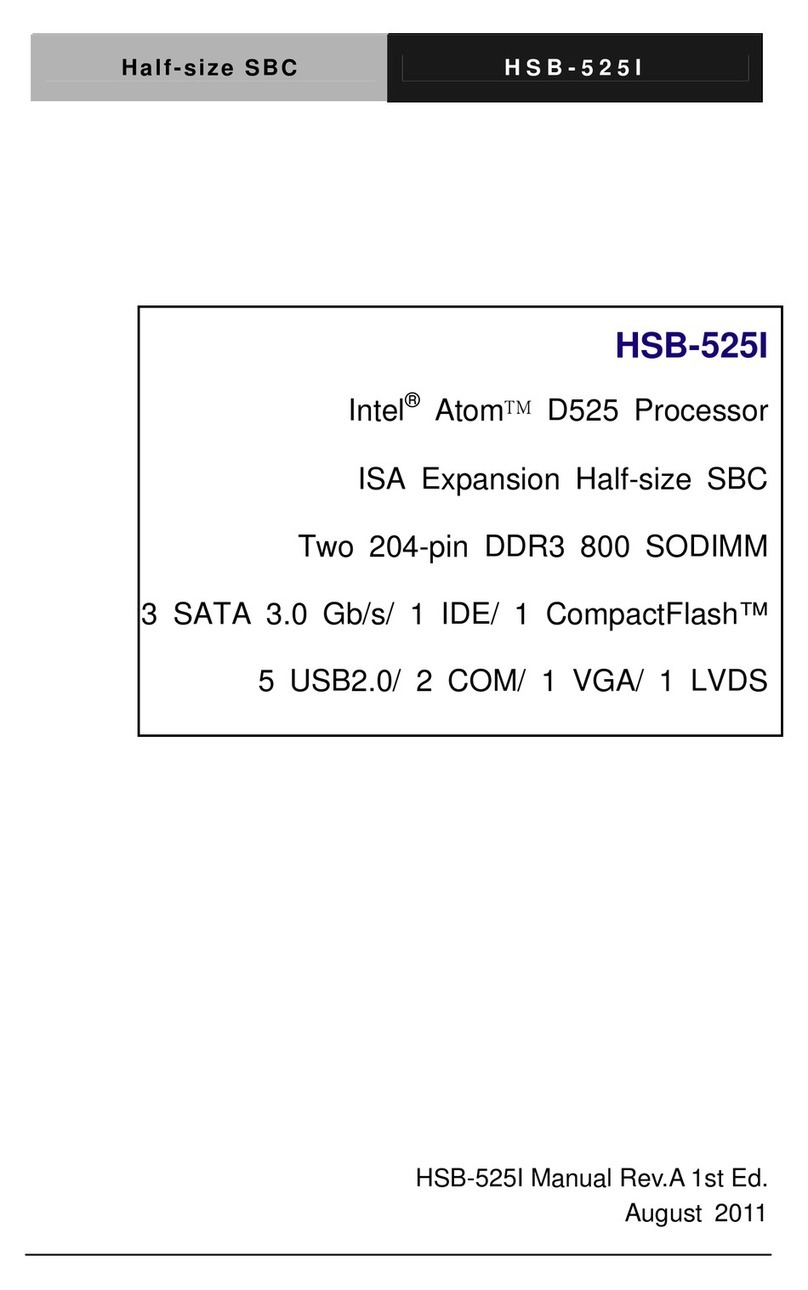
Aaeon
Aaeon HSB-525I User manual
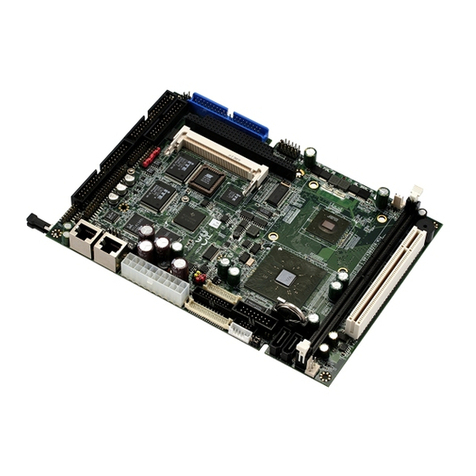
Aaeon
Aaeon PCM-8120 User manual
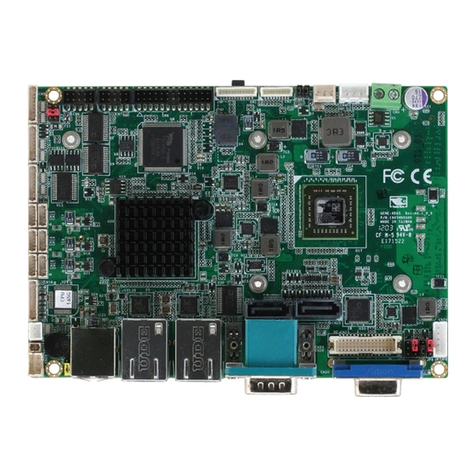
Aaeon
Aaeon GENE-HD05 User manual
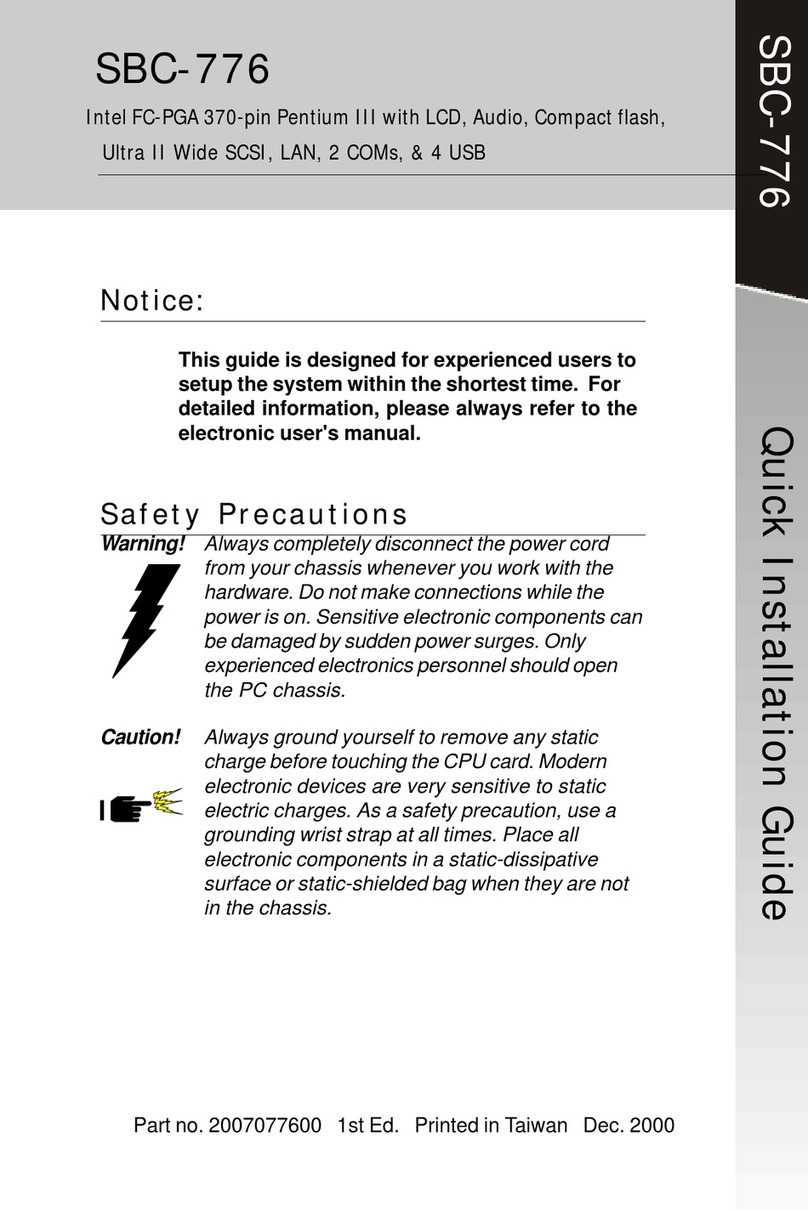
Aaeon
Aaeon SBC-776 User manual

Aaeon
Aaeon SBC-410 User manual
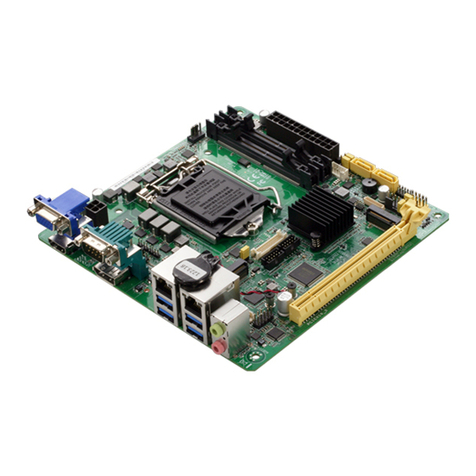
Aaeon
Aaeon MIX-H310A2 User manual
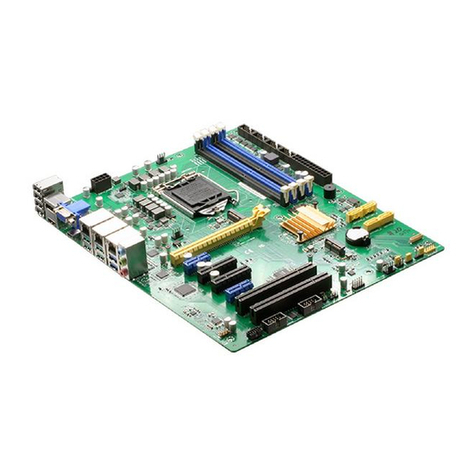
Aaeon
Aaeon ATX-Q370A User manual
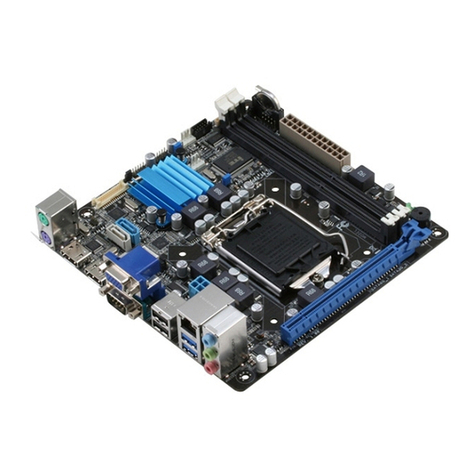
Aaeon
Aaeon EMB-B75B User manual

Aaeon
Aaeon SBC-658 User manual
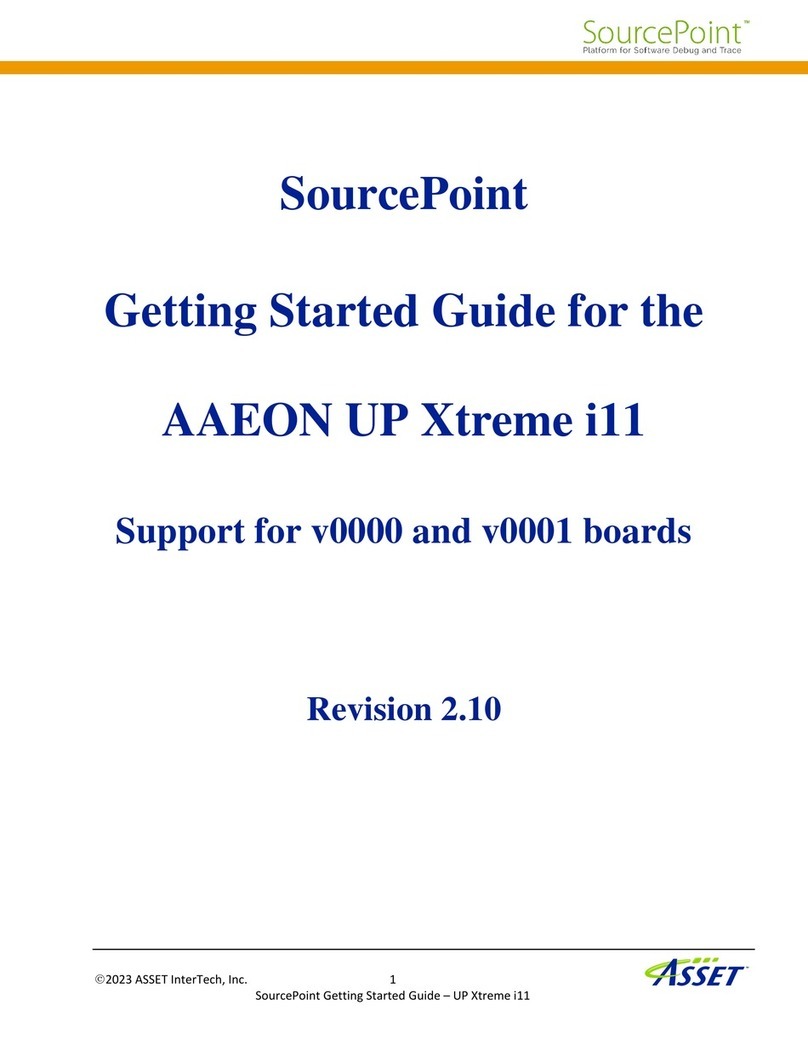
Aaeon
Aaeon UP Xtreme i11 User manual

Aaeon
Aaeon IMBA-Q77 User manual

Aaeon
Aaeon EPIC-QM77 User manual

Aaeon
Aaeon Gene-4310 User manual
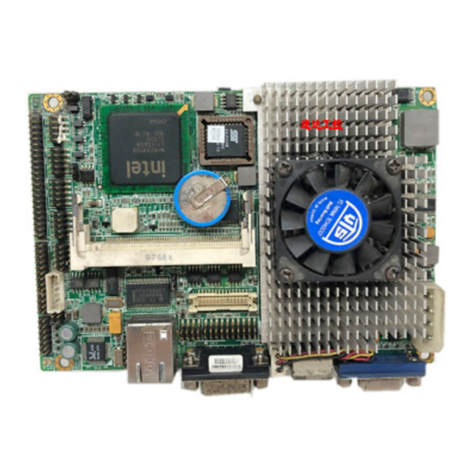
Aaeon
Aaeon GENE-8310 User manual
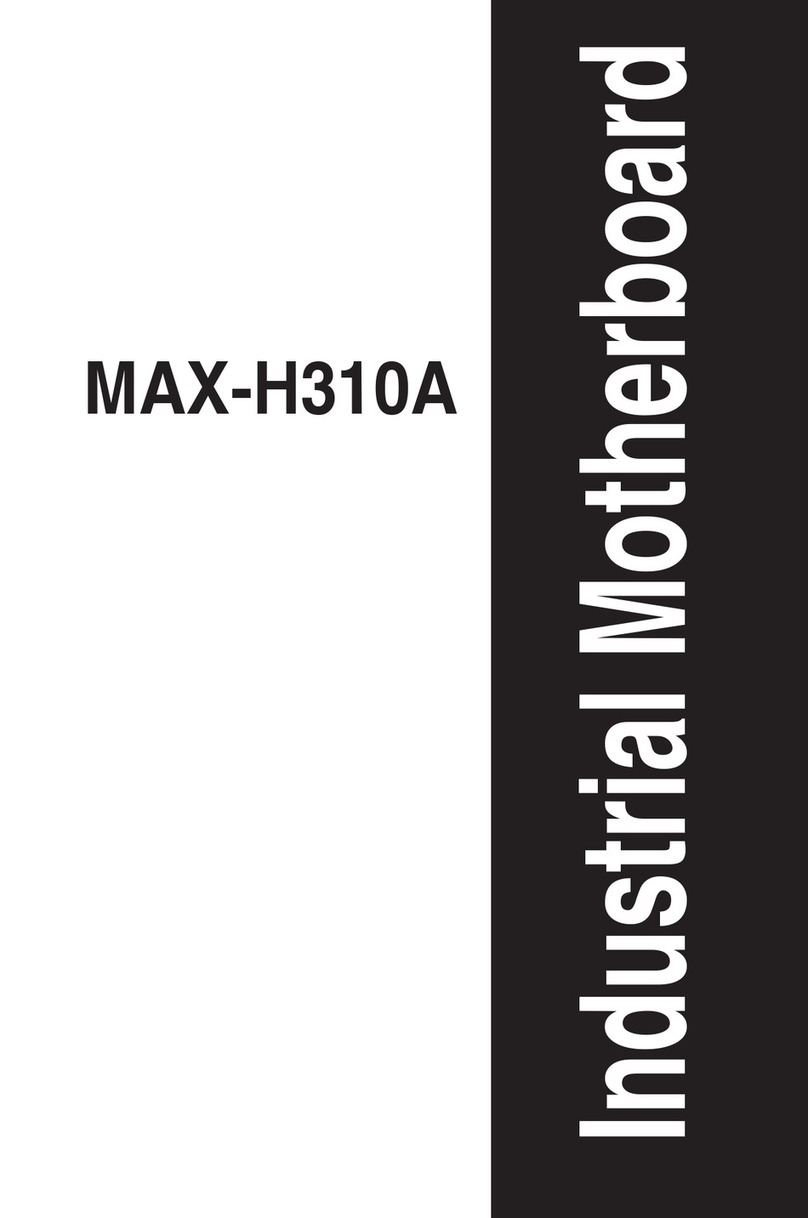
Aaeon
Aaeon MAX-H310A User manual

